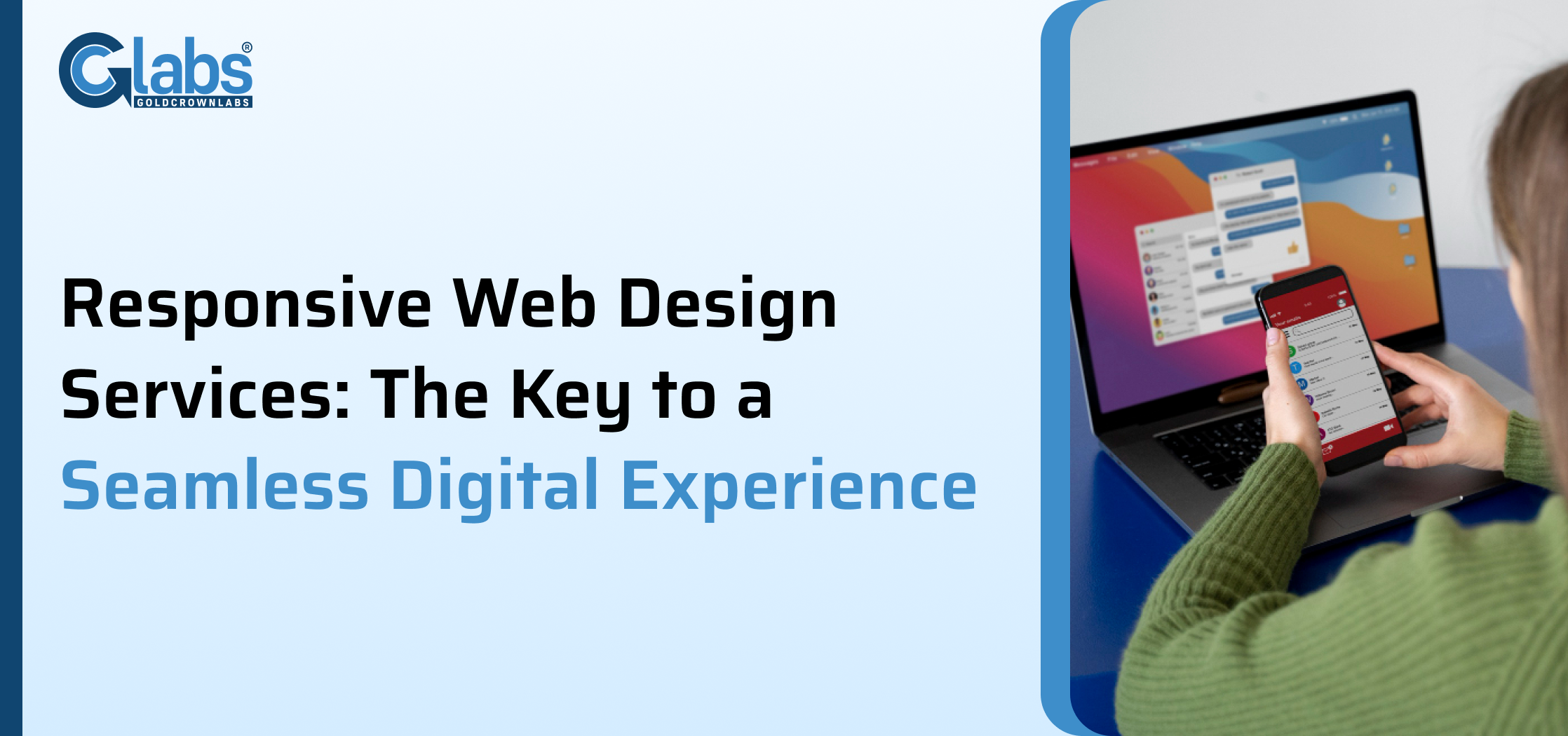In today’s fast-paced digital era, businesses cannot afford to ignore the importance of user experience across different devices. With smartphones and tablets dominating online browsing, a website designed only for desktop users falls short in meeting modern consumer expectations. This is where responsive web design services step in—ensuring that your business website adapts seamlessly to every screen size, device, and browser.
Responsive design is more than just a trend; it is a necessity for growth-driven businesses. A responsive website not only enhances usability but also improves search engine rankings, reduces maintenance costs, and maximizes customer engagement. Let’s explore what responsive design is, its benefits, core features, and how investing in professional responsive web design services can transform your digital presence.
Table of Contents
ToggleWhat is Responsive Web Design?
Responsive Web Design (RWD) is a design approach that allows a website to automatically adjust its layout and elements based on the device being used. Instead of creating separate websites for desktop, tablet, and mobile users, a single responsive website uses flexible grids, fluid layouts, and CSS media queries to deliver a consistent and optimized experience across all platforms.
For businesses, this means having one website that works everywhere—whether your audience is browsing from an iPhone, Android tablet, laptop, or widescreen monitor. Professional responsive web design services ensure that your website not only looks appealing but also functions flawlessly, improving customer satisfaction and overall performance.
Key Benefits of Responsive Web Design Services
1. Enhanced User Experience
User experience is the cornerstone of digital success. A responsive website eliminates the frustration of resizing, zooming, or horizontal scrolling. Visitors can easily navigate content, access information, and interact with your brand, regardless of the device they use. Smooth navigation keeps users engaged longer, increasing the chances of conversions and repeat visits.
2. Mobile-Friendliness
With mobile usage surpassing desktop browsing globally, Google and other search engines prioritize mobile-friendly websites in their rankings. Businesses that invest in responsive web design services automatically meet Google’s mobile-first indexing requirements, which means better visibility in search results.
3. SEO Advantages
Responsive design plays a crucial role in search engine optimization. A single, unified website prevents duplicate content issues that arise from maintaining separate desktop and mobile versions. Search engines prefer one URL and one set of HTML, making it easier to crawl, index, and rank your website. This translates into stronger SEO performance and improved organic traffic.
4. Faster Load Times
Speed is a critical factor in both user experience and SEO. Responsive websites are optimized for performance with techniques like compressed images, streamlined CSS, and lazy loading. By reducing unnecessary load times, your website keeps users engaged and minimizes bounce rates.
5. Cost-Effectiveness
Maintaining multiple versions of a website can be expensive and time-consuming. Responsive design eliminates the need for duplicate efforts by offering a single solution that works across all devices. Businesses save on development, updates, and long-term maintenance costs while ensuring a consistent brand identity.
Core Features of Responsive Web Design Services
When you hire professionals to build a responsive site, several key features come into play:
- Flexible Grids and Layouts: Content and design elements scale proportionally to fit different screen sizes.
- Fluid Images and Media: Visuals adjust automatically without losing quality or causing distortions.
- CSS Media Queries: Custom styling rules allow designs to adapt based on device orientation, resolution, or screen width.
- Cross-Browser Compatibility: Your website functions consistently across Chrome, Safari, Firefox, Edge, and more.
- Mobile-First Approach: Designing from the smallest screen upward ensures optimal performance across devices.
These features ensure your website remains visually appealing, functional, and user-friendly, regardless of how it is accessed.
The Business Impact of Responsive Design
Investing in responsive web design services directly influences business outcomes. Let’s break down how:
- Increased Customer Engagement: When visitors find a site easy to use, they are more likely to explore products or services, interact with features, and make purchases.
- Higher Conversion Rates: A responsive website minimizes friction in the buying journey, leading to improved conversions.
- Improved Brand Perception: A modern, professional, and mobile-ready site builds trust and credibility with customers.
- Competitive Advantage: In a digital-first marketplace, businesses that embrace responsive design stay ahead of competitors who still rely on outdated layouts.
Simply put, responsive websites are not just about design—they are strategic assets for business growth.
Responsive Design Development Process
Professional responsive design agencies follow a structured process to deliver effective results:
- Research & Planning – Understanding your target audience, business goals, and industry to create a tailored strategy.
- Design & Prototyping – Developing wireframes and mockups with a mobile-first approach.
- Development – Implementing flexible grids, fluid layouts, CSS media queries, and optimizing assets for speed.
- Testing & Quality Assurance – Checking the website across devices, browsers, and resolutions to ensure performance and consistency.
- Launch & Optimization – Deploying the website and continuously monitoring speed, SEO, and user experience for ongoing improvements.
This systematic process ensures that your website is not just responsive but also future-ready.
Why Businesses Need Responsive Web Design Services
Every business today—whether small, medium, or enterprise-level—must prioritize digital accessibility. From eCommerce platforms and educational institutions to healthcare providers and startups, all industries benefit from a responsive online presence.
Consider this: A potential customer visits your site on their mobile phone, but the layout breaks, images don’t align, and navigation feels clumsy. Chances are, they will leave within seconds and head straight to a competitor. Now, imagine the same scenario with a responsive website—clear navigation, quick loading, and seamless interactions. The difference is not just in user experience but also in sales, leads, and brand reputation.
By investing in responsive web design services, businesses ensure that every visitor—no matter the device—receives an optimal and engaging experience.
Best Practices for a Successful Responsive Website
To maximize results, businesses should follow these best practices:
- Prioritize Mobile-First Design: Start with the smallest screens to ensure essential elements are always accessible.
- Optimize Images and Media: Use modern formats like WebP and enable lazy loading for faster performance.
- Ensure Touch-Friendly Navigation: Larger buttons, collapsible menus, and intuitive gestures improve usability.
- Implement SEO Strategies: Focus on metadata, structured data, and mobile-friendly content.
Test Regularly Across Devices: Continuous testing ensures no gaps in user experience as technology evolves.
Conclusion
In a world where the majority of users access websites through mobile devices, responsive design is no longer optional—it’s essential. Professional responsive web design services empower businesses with websites that are fast, flexible, SEO-friendly, and cost-effective. They bridge the gap between user expectations and business goals, ensuring that every interaction counts.
Whether you’re launching a new website or revamping an existing one, adopting responsive design is one of the smartest investments for long-term digital success. It not only enhances usability and performance but also positions your brand as future-ready in an increasingly competitive online marketplace.



